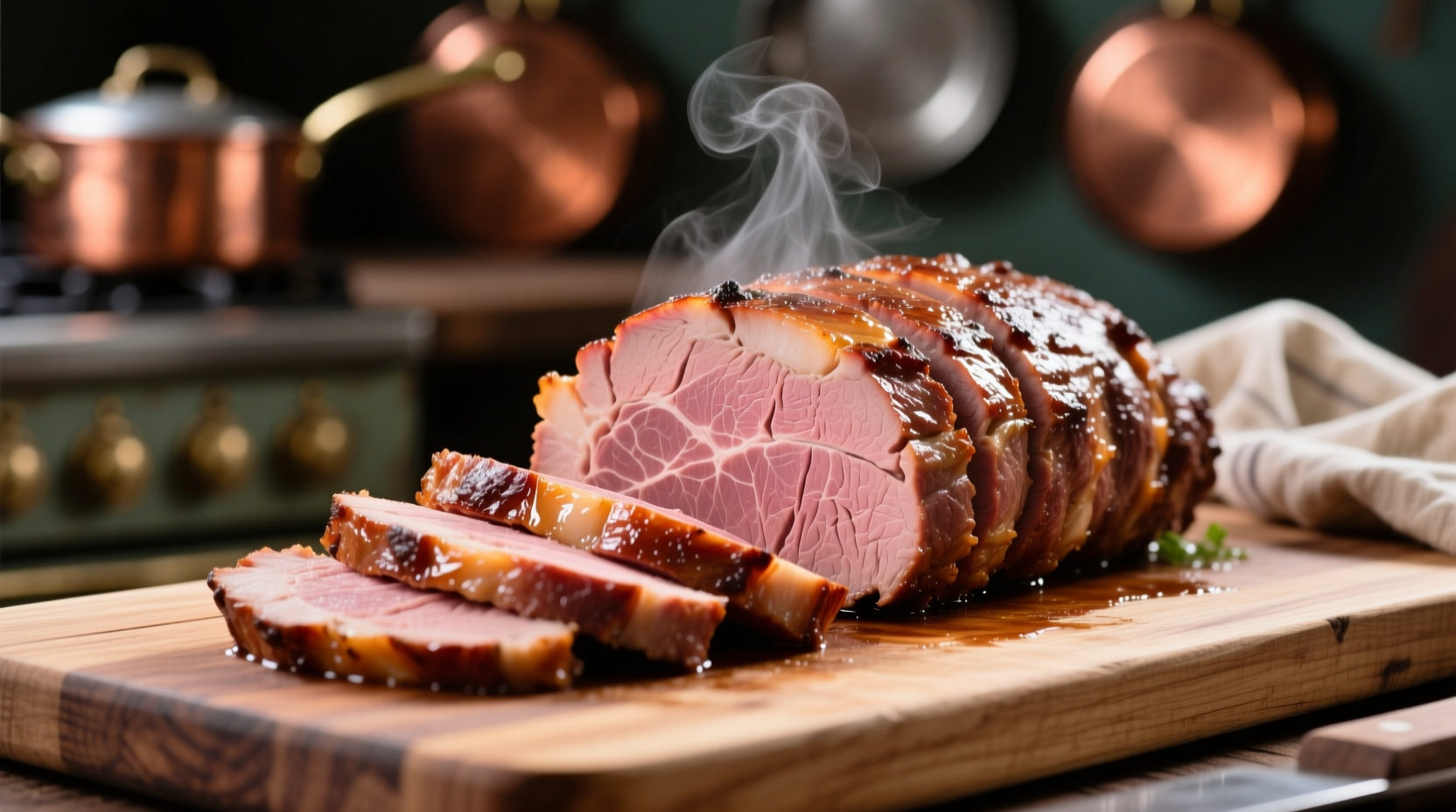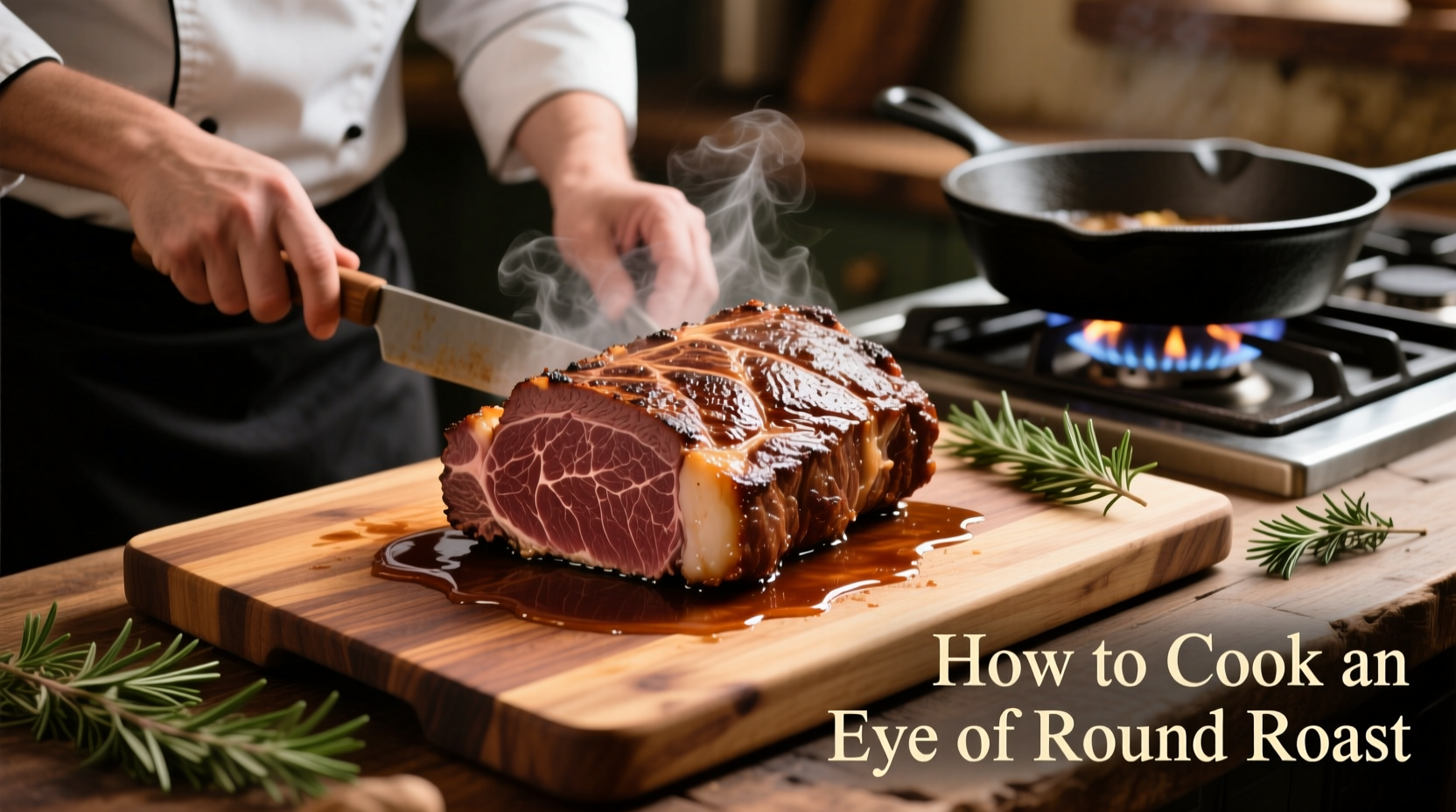The perfect way to cook an eye of round roast is using a low-and-slow oven method at 275°F (135°C) until it reaches 130-135°F (54-57°C) internal temperature for medium-rare, followed by a mandatory 20-30 minute rest. This lean cut requires precise temperature control and proper slicing against the grain to prevent toughness.
Why Your Eye of Round Roast Keeps Turning Out Tough (And How to Fix It)
Eye of round roast consistently frustrates home cooks because it's one of the leanest cuts from the rear leg muscle group. Without proper technique, this budget-friendly roast becomes chewy and dry. The secret? Understanding its muscle structure and applying science-based cooking methods that maximize tenderness.
Understanding This Challenging Cut
Before you start cooking, recognize what makes eye of round unique. This cut comes from the cow's rump, which means it's worked extensively during the animal's life, creating dense muscle fibers with minimal fat marbling. Unlike chuck or rib roasts, it lacks the natural fat that keeps meat moist during cooking.
| Cut Comparison | Eye of Round | Rib Roast | Chuck Roast |
|---|---|---|---|
| Location | Rear leg | Upper rib section | Shoulder |
| Fat Content | Very low (2-3%) | High (15-20%) | Moderate (8-12%) |
| Best Cooking Method | Low-temp oven | High-heat sear + roast | Braising |
| Price per Pound | $4-6 | $14-18 | $5-8 |
Your Complete Cooking Timeline
Follow this precise timeline for perfect results. Timing varies based on roast size, but this framework works for most 2-3 pound roasts:
- 24 hours before: Trim excess fat, apply dry rub, refrigerate uncovered
- 2 hours before cooking: Bring roast to room temperature
- Cooking time: 20-25 minutes per pound at 275°F (135°C)
- Target temperature: 130°F (54°C) for medium-rare
- Resting period: 20-30 minutes (critical step!)
- Serving: Slice thinly against the grain
Step-by-Step Cooking Method
Preparation Essentials
Select a roast with minimal external fat but some internal marbling. Pat completely dry with paper towels—moisture is the enemy of proper browning. For maximum flavor penetration, apply a simple dry rub of kosher salt, black pepper, garlic powder, and onion powder 24 hours before cooking. This extended seasoning time allows salt to penetrate deeper into the muscle fibers.
The Perfect Oven Method
Preheat your oven to 275°F (135°C)—lower than most recipes suggest. Place the roast on a wire rack over a baking sheet. Insert an oven-safe thermometer into the thickest part. Roast until the internal temperature reaches 120°F (49°C), then remove from oven. The temperature will continue rising to 130-135°F (54-57°C) during resting. This gentle cooking prevents the muscle fibers from seizing up.

Alternative Cooking Methods
While oven roasting delivers the most consistent results, these alternatives work when time or equipment is limited:
- Slow cooker method: Sear first, then cook on low for 8-10 hours with 1 cup broth
- Instant Pot method: 60 minutes on high pressure with natural release
- Sous vide method: 130°F (54°C) for 24-48 hours, then sear
According to USDA Food Safety and Inspection Service guidelines, beef roasts should reach a minimum internal temperature of 145°F (63°C) with a 3-minute rest time for food safety. However, for premium tenderness with eye of round, many professional chefs recommend pulling at 130°F (54°C) and allowing carryover cooking to reach the safe temperature during resting.
Troubleshooting Common Problems
If Your Roast Is Turning Out Dry
This happens when the roast exceeds 140°F (60°C). The lean muscle fibers expel all moisture beyond this point. Solution: Use a reliable thermometer and pull the roast 5-10 degrees below your target final temperature.
If You've Already Overcooked It
Rescue dry roast by thinly slicing against the grain and serving with a flavorful pan sauce. The University of Minnesota Extension recommends slicing at a 45-degree angle across the grain to maximize tenderness in overcooked lean meats.
Serving and Storage Tips
Always slice against the grain using a sharp carving knife—this shortens the muscle fibers for easier chewing. For meal prep, store slices in their juices in an airtight container for up to 4 days. When reheating, place slices in a covered dish with a splash of broth and warm gently at 250°F (121°C) to prevent further moisture loss.











 浙公网安备
33010002000092号
浙公网安备
33010002000092号 浙B2-20120091-4
浙B2-20120091-4